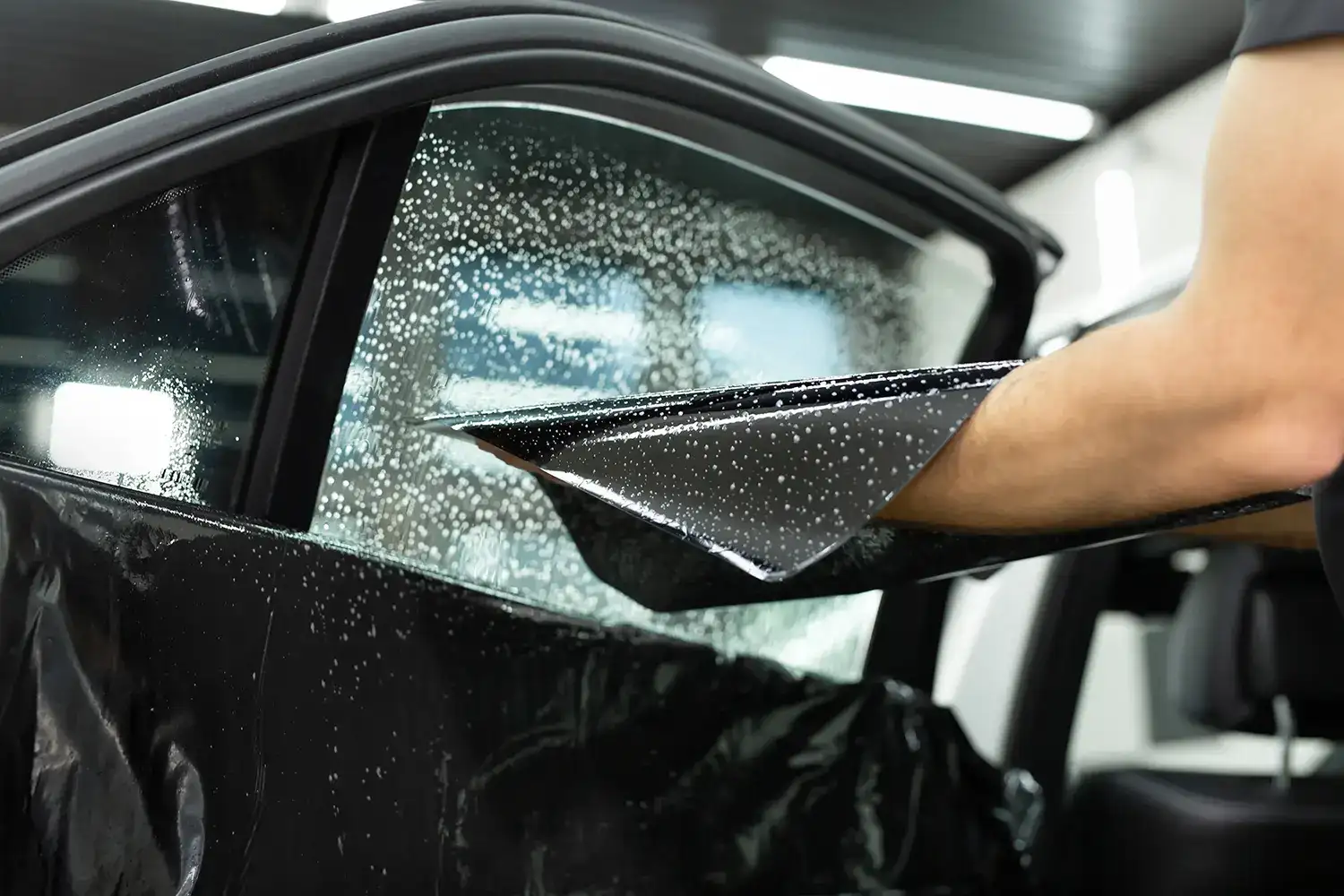The Most Effective Window Tinting Alternatives for UV Defense and Warm Reduction
The Most Effective Window Tinting Alternatives for UV Defense and Warm Reduction
Blog Article
The Process of Expert Home Window Tinting Explained
From selecting the right film type to the thorough prep work of home windows, each action plays an essential function in attaining a flawless application. Adhering to these first prep work, the mindful cutting and application of the film need accuracy to avoid flaws.
Picking the Right Home Window Movie
The initial factor to consider is the type of movie, which can vary from colored, metalized, to ceramic films (window tinting). Colored films primarily offer privacy and aesthetic improvement, while metalized movies mirror heat and UV rays, boosting power effectiveness.
Following, take into consideration the film's Visible Light Transmission (VLT) portion, which identifies just how much light enters the room. A reduced VLT provides higher personal privacy and heat rejection but might lower natural light dramatically. Furthermore, the movie's solar warm gain coefficient (SHGC) is vital; a lower SHGC indicates better thermal efficiency, assisting to keep interior comfort.

Preparing the Windows
When the suitable window film has been chosen, the next step is completely preparing the home windows for setup. This preparation is essential for achieving optimal attachment and guaranteeing a remarkable look post-installation.
The first job includes cleaning the home windows carefully (window tinting). A high-grade glass cleaner is necessary, preferably one that is ammonia-free to prevent destructive any window seals or tint materials. Using a lint-free cloth or paper towels, specialists must eliminate any type of dirt, dirt, or oil, paying unique focus to the sides and edges where debris usually accumulates

Reducing the Film
An accurate approach to cutting the movie is essential for guaranteeing a best fit on the ready windows. This action needs both ability and attention to information, as errors can lead to unpleasant voids or overlaps that concession the visual and useful top qualities of the tint.
Prior to cutting, the expert should determine the home window dimensions properly, accounting for any type of one-of-a-kind forms or contours. It is recommended to utilize high-grade home window film, as this material often tends to be much more forgiving during the reducing procedure. The film is typically laid flat on a clean, smooth surface, and a sharp energy knife is utilized to ensure tidy sides.
To accomplish optimal outcomes, lots of specialists use templates developed from previous installments or utilize software program to develop specific patterns. An usual strategy entails including an extra margin to the design template, permitting for adjustments during the application stage.
Moreover, cutting the film in a controlled environment reduces the threat of Discover More contaminants impacting the sticky side. By adhering to these thorough methods, window tinting experts can ensure that the movie not only fits effortlessly yet also does effectively in time, enhancing both appearance and capability.
Using the Tint
After thoroughly reducing the film to the right measurements, the following step entails applying the color to the home window surface area. This process starts with making sure that the home window is tidy and without any dirt, debris, or residues that could affect adhesion. A specific cleaning option is frequently utilized, complied with by complete drying with a lint-free towel.
As soon as the surface is prepared, the installer will carefully position the color movie versus the glass. It is crucial to straighten the film accurately to stay clear of misplacement, as any kind of errors find out this here can lead to an unprofessional look. To promote this, the installer may use a light haze of application option on the adhesive side of the film, permitting for minor rearranging if necessary.
Making use of a squeegee, the installer will certainly then begin to press the film onto the glass, functioning from the facility outwards to eliminate air bubbles and guarantee a company bond. This technique is vital, as it ensures a smooth and flawless coating. Throughout the application, focus to detail is essential to stop creases or blemishes, ensuring that the tint not just improves looks yet additionally provides the desired functionality.
Final Inspection and Care
The final assessment is an important step in the home window tinting process, guaranteeing that the installment satisfies both visual and functional criteria. Throughout this phase, experts meticulously take a look at the set up color for any blemishes, such as bubbles, folds, or misalignments. A comprehensive analysis additionally includes examining the adherence of the film to the glass, along with its harmony YOURURL.com and general appearance.
After the examination, appropriate care and upkeep guidelines are provided to the customer. It is important to inform them about the suggested timeline for cleaning the colored home windows, usually advising a delay of a minimum of 1 month after installment to allow the glue to cure totally. Clients need to be educated on appropriate cleaning products and techniques, emphasizing the evasion of ammonia-based cleaners that can harm the tint.
Additionally, professionals should encourage clients on the relevance of routine maintenance to extend the life of the tint. This consists of periodic look for indications of wear or damages and reacting quickly to any type of problems. By ensuring a thorough final examination and supplying clear care standards, home window tinting professionals boost customer complete satisfaction and the longevity of their work.
Final Thought
The professional window tinting process incorporates several critical actions that make certain high-quality results. Choosing the proper film kind, preparing the windows diligently, properly cutting the movie, and applying it with accuracy are vital for accomplishing a remarkable coating. A comprehensive final inspection assurances that all standards are met, while correct post-installation care is vital for preserving the tint's long life and performance. Following these procedures inevitably enhances both the visual appeal and capability of the colored windows.
Report this page